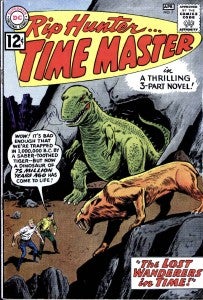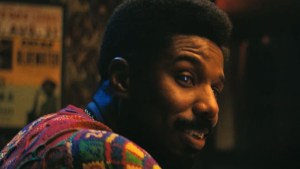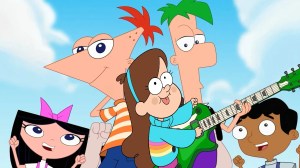In the first issues of Legion of Super-Heroes and Legion Lost, published immediately after Flashpoint and featuring heroes from the far-flung future, two different characters (one in the present and one in the past) said that the “Flashpoint breakwall” was preventing them from traveling or seeing through time. It jived with comments made by DC Co-Publisher Dan DiDio that the time stream was “closed.”Recently, though, we’ve seen what appears to be a softening of the breakwall. The Legion of Super-Heroes have traveled back to see their old pal Superman in Grant Morrison’s Action Comics (in an issue which may, or may not, be set five years in the past and which then may, or may not, occur far enough away from Flashpoint to justify the disparity). The Multiverse is also bleeding into the DCnU in a big way for the first time, with the definitive reveal that Paul Levitz’s The Huntress stars a character who hails from Earth-2. Power Girl, whose alter ego Karen Starr is presently appearing in the soon-to-be-canceled Mr. Terrific, will co-star with The Huntress in Worlds’ Finest, a series beginning in May and revolving around the pair trying to find their way “home.” That monthly will launch at the same time as Earth 2, the Justice Society of America title by James Robinson and Nicola Scott, begins. Complicating matters further is the fact that, in the back of a number of DC books last week was a two-page splash featuring a number of character sketches meant to appear in stories told in 2012. right in the middle is a turnaround by Cully Hamner of what I would bet is the Mr. Terrific of Earth 2–a white guy with “Fair Play” on his costume.If Earth 2 is revealed to tie into Robinson’s current miniseries The Shade, it will raise interesting questions about whether Robinson’s beloved run on Starman happened in the DCnU–and if it did, whether it happened on Earth 2. If The Shade and Earth 2 are unrelated, the necessary logic would retcon most of Robinson’s Starman run, which relied heavily on the JSA and the decades of complex DC history which no longer happened in the post-Flashpoint DC Universe.All of that, of course, is just one degree of separation from events that we know to be happening and doesn’t take into account questions like “Whatever happened to Cameron Chase’s father?” Chase is presently appearing as a supporting character in Batwoman, but back when she had her own ongoing her tragic origin story revolved around a minor-league superhero team her father was a part of in the late ’60s. That obviously no longer jives with the altered continuity and while it’s a minor tweak to give her a new reason for her distrust of the metahuman community or just for doing what she does, it’s emblematic of the problem DC has created for themselves by having spent the last twenty or so years creating an army of great legacy characters and then shanghaiing the lot of them on a world where their legacies no longer make a lick of sense.At the end of it all, you’ve got Rip Hunter, Time Master. He’s yet to make an appearance in the New 52, but when his (spoiler alert) father and protege, Booster Gold, reappeared in the new DC Universe following Flashpoint, his arrival was at Vanishing Point, where the pair have been, well, mastering time together. It’s never been definitively stated that his history as a Time Master remains intact in the new continuity, but it seems likely that most or all of those stories did occur given that Geoff Johns had a guiding hands in the earliest days of the book and that the character’s creator, Dan Jurgens, took over the book after that and has handled Booster continuously since, including in the relaunched Justice League International. Just Booster’s being unsurprised to arrive at Vanishing Point was enough to prod many Booster fans into assuming that those stories had happened in one form or another, although the more critical element of fandom might point out that in this new universe, there’s no telling what Vanishing Point actually is or does. Skeets’s absence from the pages of JLI, while having been referenced by and communicating with Booster, lends a little credence to the idea that Booster may have some superheroic irons in the fire that the rest of the League (or at least the rest of the League minus Batman) don’t know about–but even if he and Rip are secretly being Time Masters, what does that mean in a universe where the timestream is closed? After 52, it was only those two and a select handful of others that were aware of the Multiverse, but with Earth 2, Worlds’ Finest and Mutliversity all coming up in 2012 it seems safe to bet that those concepts will be front and center for quite a lot of DC characters in the year to come. In spite of early hints that it might, Booster’s solo title (canceled with the New 52 relaunch) never made the jump from time travel to Multiverse travel. Is it possible that’s what Rip has been doing in these months of radio silence?So–how DOES time travel work in the New 52? After asking what seems like a whole lot of questions here I still don’t really have an answer. Stay tuned to next month’s Action Comics, I suppose, for hints–and maybe even Justice League International.
So–How DOES Time Travel Work in the New 52?
In the first issues of Legion of Super-Heroes and Legion Lost, published immediately after […]










